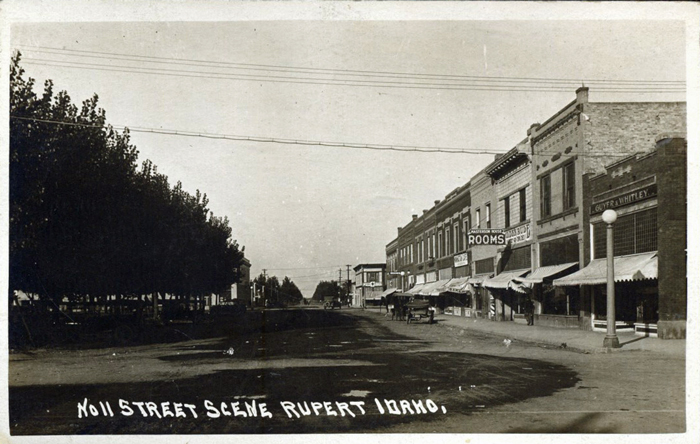
was the eldest daugher of Arthur McIntyre and Amine (Strickland) Beymer, she had two sisters and two younger brothers. Her father was in the lumber and hardware business in Corning and later was appointed Postmaster. After the death of his first wife he remarried and relocated to Carthage, Missouri where he built up a large factory manufacturing wire spring beds. Eleven years later he sold his business and moved to Rupert, Idaho but found the altitude too high and moved to Seattle. He died in 1934 two months short of age 90 and is buried in Corning.
I can't find much about Anna's mother except that she was born in Clyde, Ohio and died in Corning, Iowa on Dec. 30, 1904.
Soon after the death of Frank, Anna LaRue moved to Rupert, Idaho with her brother Arthur Beymer. They first settled at Minidoka and then homesteaded three miles south of Rupert when the Minidoka Project opened. After her brother married in 1909 she moved in to Rupert.
Anna died November 23, 1951 in Salt Lake City, Utah where her grandson, Frank Eames LaRue lived, she was 85. Her obituary reports that she was a pioneer of the Minidoka project and very prominent in town affairs, during World War I she was in charge of the Red Cross sewing room. Later, in 1920, she became librarian, a post she held until 1945.

Rupert is in the southern part of Idaho about 75 miles west of Pocatello. A quick perusal of the
In October of 1943 the government opened a WWII Prisoner camp, called Camp Rupert, where Italian, German and Russian prisoners of war were kept. It is said that many of them established good relations with the local farmers for whom they were forced to work."
was born October 11, 1887; he was 16½ years old at the time of the bank failure. His name shows up periodically when his appointed guardian ad litem is changed. In September of 1904 it is reported that he will attend college at Lake Forest, Illinois.
An article in September of 1905 says he and his uncle Arthur Beymer are visiting Corning from their home in Rupert, Idaho where they are engaged in the lumber business. In November of 1905 it is reported that his mother is en-route to Corning for a brief visit and will then spend the winter in Chicago where her son is attending school. From this I can't tell whether Frank graduated college or not before settling in Rupert where he and his uncle Albert M. Beymer, Jr. ran a hardware and lumber store.
Frank married Lucille Shilling on July 13, 1911 at Ocean Park, California. On July 14, 1915 he conveys, for $1.00, to his aunt Daisy Kennon part of "lot 11, Ingalls sub-division. I believe this to be the home, on Grove Avenue, that she lived in until her death. Both the 1920 and 1940 census record that she owns the home free and clear.
Frank June LaRue died of cerebral meningitis at the age of 30 on March 4, 1918, exactly 14 years to the day after his father's death. Lucille is then present in the 1920 and 1930 census (taken April 2, 1930) in Rupert, Idaho. She died in San Francisco a little more than 2 months later, on June 20, 1930, her children were ages 12 through 18.
Anna Beymer LaRue, their grandmother, cared for them until they were all married.